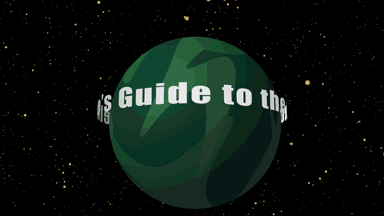Scienceline’s Guide to the Exoplanets: The Tea Kettle
WD 1145+017 b: Boiling away...
Rahul Rao • March 23, 2020

Your favorite planets, and you didn't even know they existed. [Credit: Curtis Segarra | CC BY-NC-ND 2.0]
WD 1145+017 b: The Tea Kettle
Discovered by: Kepler space telescope
Discovered: 2015
Distance from Earth: ~570 light-years
Size: ~0.15 Earth radii
Mass: ~0.0007 Earth masses
Surface climate: Metal boils
Habitability for humans: You, too, will boil
Since the 1990s, astronomers have discovered over 4,000 exoplanets. Some are Earth-like, perfectly placed around their parent stars to have water — and perhaps even what we’d recognize as life. Others are majestic, truly massive gas giants, so colossal they make Jupiter look like a mere moon in comparison. Yet others are utterly alien worlds, with crusts of diamond or oceans hundreds of miles deep.
Still other exoplanets are rapidly disintegrating, melting down and eroding away in the dying light of what was once a star.
WD 1145+017 b — so named for being the second object (hence the “b”) in the system of the creatively named star WD 1145+017 — is one of those. When it was discovered, it was the first exoplanet to be found around a white dwarf — the end stage of most stars.
In fact, in several billion years, Earth’s own Sun will become a white dwarf. When a star that’s too small to end in a supernova doesn’t have enough material to keep burning, it will throw off its outer layers and leave behind an Earth-sized remnant core: a white dwarf.
But just because white dwarfs are stars in old-age care doesn’t mean they instantly freeze. They’re still just as hot as their stars’ interiors once were, taking billions of years to cool off to the temperature of the surrounding deep space. WD 1145+017 in fact burns three times hotter than the surface of the Sun.
So not only does the planet WD 1145+017 b live with a star that’s searing hot, the planet orbits at only 0.005 AU — around 1/200 the distance from the Sun to the Earth, and only around twice the distance from the Earth to the Moon. Because it is so close, a year on WD 1145+017 b lasts under five Earth hours.
What this means is that WD 1145+017 b is hot enough for most metals to boil away. You probably wouldn’t be able to stand on its surface even if you had clothes that would withstand the heat — because the planet is actively being vaporized.
Not only that, but astronomers believe that there are a number of other planetoids orbiting the star — perhaps asteroids or the remnants of other planets from the star system that fell inwards over time. This means that debris rains down from WD 1145+017 b’s sky, further tearing the planet apart.
This apocalyptic combination means that the minerals that were once WD 1145+017 b’s interior are being kicked up and sheared off into a cloud of gas and dust that astronomers believe is forming a ring around the star. In fact, in only a few hundreds of millions of years, the entire planet will have dissolved.
Even though it’s the opposite of a planet that could support anything which we on Earth would recognize as life, WD 1145+017 b is exciting to astronomers because of what it can tell about what happens to planets when their parent star reaches the end of its lifespan. Which is pretty impressive in its own right.